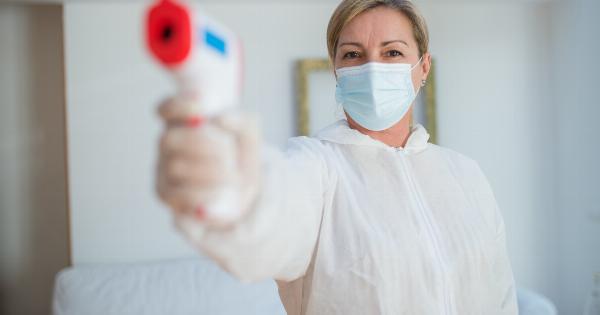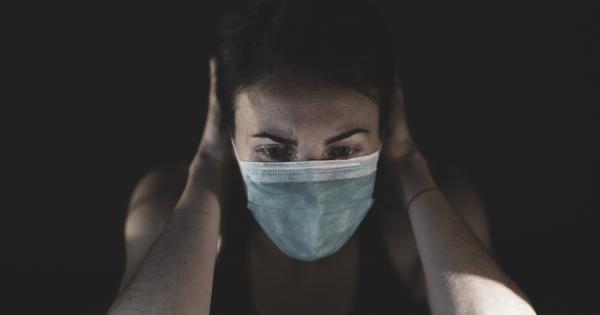In a society where taboos around discussing sexuality and reproductive health still exist, it is not surprising to find alarming statistics related to young women’s lack of knowledge about their own bodies.
Recent research has shed light on the fact that a significant percentage of young women, around 50%, have no idea where their own vagina is located. This ignorance highlights a dire need for comprehensive sexual education and improved body awareness among young women.
Defining the Vagina
Before delving into the reasons behind this lack of knowledge, it is important to clarify what the term “vagina” actually refers to.
The vagina is a muscular canal located in the reproductive system of females, connecting the external genitals (vulva) to the internal reproductive organs, such as the uterus and ovaries. Understanding the anatomical structure and function of the vagina is crucial for women’s reproductive health and overall well-being.
Factors Contributing to the Lack of Knowledge
Several factors contribute to young women’s lack of knowledge about their own bodies, specifically the location of their vagina:.
1. Taboos and Lack of Open Dialogue
In many societies, discussing sexuality, reproductive health, and bodily functions is considered taboo.
This lack of open dialogue can lead to feelings of shame, embarrassment, and discomfort when it comes to discussing or learning about these topics, preventing young women from seeking knowledge about their own bodies.
2. Insufficient Sexual Education
Sexual education in many countries is often inadequate, with schools focusing on the basics of reproductive biology without addressing important topics such as body anatomy and personal hygiene.
This limited education fails to equip young women with the necessary information to understand and locate their own reproductive organs.
3. Cultural and Religious Beliefs
Cultural and religious beliefs can also contribute to the lack of knowledge about the vagina. In some cultures, discussing or even acknowledging female sexuality is seen as inappropriate or even sinful.
This leads to a lack of education and understanding about female reproductive health.
4. Lack of Empowerment and Body Ownership
Societal norms often place an emphasis on women’s appearance rather than their health and well-being. This can lead to young women feeling disconnected from their own bodies and lacking a sense of ownership over their reproductive health.
Without a sense of empowerment and body ownership, women may not prioritize learning about their own anatomy.
5. Inadequate Communication with Healthcare Providers
Even when seeking medical advice, young women might feel uncomfortable discussing their own bodies or asking questions about their reproductive health.
This lack of communication and the resulting absence of guidance from healthcare professionals further perpetuate the lack of knowledge about the vagina.
Importance of Body Awareness and Sexual Education
Developing body awareness and receiving comprehensive sexual education are vital for young women’s reproductive health, overall well-being, and empowerment.
By understanding their own anatomy, young women can better identify any potential abnormalities or health concerns, prompting them to seek appropriate medical attention.
Body awareness also plays a crucial role in interpersonal relationships and sexual experiences.
When young women are acquainted with their own bodies, they can communicate their boundaries, desires, and consent effectively, fostering healthier and more fulfilling relationships.
Promoting Change: Improving Sexual Education
To address the alarming statistics and ensure that young women are equipped with the necessary knowledge, it is essential to advocate for improved sexual education:.
1. Comprehensive Curricula
Schools and educational institutions should implement comprehensive sexual education curricula that cover topics like body anatomy, reproductive health, contraception, safe sex practices, and consent.
This information should be presented in an age-appropriate and inclusive manner.
2. Promoting Open Dialogue
Encouraging open and non-judgmental discussions about sexuality can help break down taboos and myths surrounding the topic.
Parents, educators, and healthcare providers should create safe spaces for young women to ask questions and seek information without fear of judgment.
3. Engaging Healthcare Professionals
Healthcare providers play a pivotal role in educating young women about their bodies.
By actively engaging with patients, providing clear explanations, and addressing any concerns, healthcare professionals can empower young women to take control of their reproductive health.
4. Media and Online Resources
The media and online platforms can contribute significantly to sexual education.
Utilizing these platforms to provide accurate and inclusive information about sexual health can reach a broader audience and serve as a valuable resource for young women seeking knowledge about their own bodies.
Conclusion
The research revealing that 50% of young women have no idea where their vagina is highlights a concerning issue regarding the lack of sexual education and body awareness.
Breaking the cycle of ignorance requires collective efforts from parents, educators, healthcare providers, and society as a whole. By fostering open dialogue, implementing comprehensive sexual education curricula, and encouraging body awareness, young women can be empowered to understand and embrace their own bodies, leading to healthier lives and relationships.






























